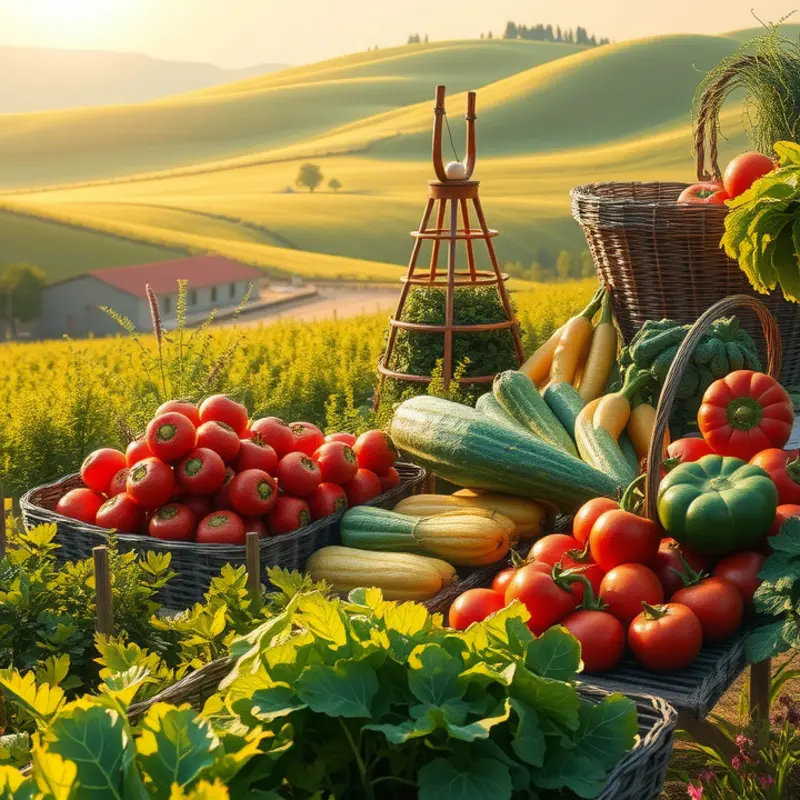Learning essential cooking skills is the cornerstone of becoming a confident home cook. Whether you’re a beginner or seasoned in the kitchen, mastering basic techniques will deepen your culinary experience. From knife skills to flavor balancing, these practical tips will empower you to whip up delightful dishes effortlessly, enhancing your enjoyment of cooking and feeding others.
Knife Skills: The Foundation of Cooking

Mastering knife skills is crucial to becoming proficient in home cooking. At the heart of kitchen efficiency and safety lies the understanding of how to properly handle a knife. Let’s start by identifying the various types of knives and their intended uses.
Every kitchen should have a chef’s knife, a versatile tool indispensable for most cutting tasks. Its broad blade is perfect for chopping, slicing, and dicing. A paring knife is smaller with a pointed tip, ideal for peeling fruits and vegetables. A serrated knife works excellently with bread and tomatoes due to its saw-like edge.
Once you know the types, the next step is to learn the basic cuts. Familiarity with these will elevate your cooking. The chop is quick and informal, good for when precision isn’t necessary. For uniformity, the dice involves cutting ingredients into small, equal cubes. The julienne resembles matchsticks, perfect for garnishes or stir-fries. Practicing these regularly will improve precision and speed.
Safe handling is as important as technique. Always focus on your task; distractions can lead to accidents. Utilize the ‘claw grip’ by curling your fingers under your knuckles and letting them guide the knife. This keeps your fingertips safely tucked away. Additionally, maintaining a stable cutting board by placing a damp cloth underneath helps prevent slips.
To ensure your knives perform optimally, regular maintenance is essential. Sharpening involves grinding against a whetstone or honing steel, restoring the blade’s edge. While honing should be done before each use to realign the blade, sharpening is needed less frequently. Consider professional sharpening once or twice a year, depending on usage. Always clean your knives promptly and store them in a knife block or magnetic strip to avoid dulling the blades.
For some recipes, efficient knife use can also affect the dish’s flavor profile and texture, as uniformly cut ingredients cook evenly and maximize flavor extraction. For a practical application of knife skills, try making a Mediterranean Chickpea Salad, which requires precise vegetable cuts to balance freshness and texture.
By mastering these skills, you set the foundation for more advanced culinary techniques, enhance your cooking efficiency, and above all, ensure safety in your kitchen.
Building Flavor: The Art of Seasoning

Once you’ve mastered the basics of chopping and preparing ingredients, understanding how to build and enhance flavors is your next culinary milestone. Seasoning is the secret weapon in a cook’s arsenal, transforming ordinary dishes into extraordinary experiences.
Flavoring food starts with salt. It enhances the inherent flavors and can dramatically improve the taste of your dish. Salting should occur at each cooking stage, but with restraint. Taste frequently to avoid over-salting; you can always add more but can’t take it away.
Herbs and spices: They’re integral to developing complex flavors. Herbs like basil, thyme, and cilantro bring fresh, aromatic notes, while spices such as cumin, paprika, and coriander add depth and warmth. Use fresh herbs for subtle, bright flavors in salads and as garnishes, while dried herbs can withstand longer cooking times in stews and roasts.
Understanding the timing of adding herbs and spices is crucial. Heavier dried spices benefit from early addition, allowing them time to coax out their full aroma during cooking. On the other hand, fresh herbs shine when added at the end of cooking to maintain their delicate flavor.
Acids unleash flavors by balancing and brightening dishes. Ingredients like lemon juice, vinegar, and tomatoes add necessary tang that enhances flavor profiles. A squeeze of citrus over a dish right before serving can elevate its taste from good to great.
Equally important is the art of layering flavors. Building from the ground up ensures depth and complexity. Begin with a well-seasoned base like onions sautéed in olive oil. Gradually introduce spices and aromatics, followed by herbs and acids, to create rich, multi-dimensional flavors.
For a practical application, try experimenting with a salad like the Mediterranean Chickpea Salad. The preparation includes a variety of seasonings that coalesce into a vibrant, flavorful dish, showcasing the power of proper seasoning and balance.
The journey from competent home cook to master begins and ends with seasoning. A great dish isn’t just about high-quality ingredients; it’s about knowing how best to enhance their inherent flavors through careful, considered seasoning. With each meal, you’ll grow more adept at recognizing when a dish needs a pinch of salt or a splash of vinegar. In time, you’ll seamlessly infuse dishes with rich flavor profiles, creating memorable meals that linger on the taste buds.
Final words
Mastering these essential cooking skills will elevate your home-cooking experience, giving you the confidence to experiment with different cuisines. Having solid knife skills allows for efficient ingredient preparation, while understanding flavor will transform simple meals into delightful dishes. Remember, cooking is about exploration and enjoyment. With patience and practice, you will continue to evolve and refine your skills, turning your kitchen into a canvas for your culinary creativity.







